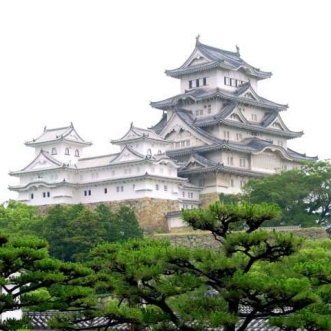
Osaka Castle, one of Japan’s most famous landmarks, also played a major role in Japan’s unification during the 16th century. It was originally constructed from 1583-1597, modeled after the Azuchi Castle near Kyoto, with a 5-story main tower and 3 extra stories underground. Unfortunately, this original castle was burnt down in 1615, during the Siege of Osaka, when the Tokugawa Shogunate completely defeated the Toyotomi clan, which built the original castle, after filling in the outer moat, thereby negating one of the castle’s main outer defenses.
In 1620, reconstruction began with a new main tower, consisting of 5 stories on the outside and 8 on the inside. Construction of the castle’s walls fell to individual samurai clans, which inscribed their family crests on them. These walls still stand today, having been made out of interlocked granite boulders without mortar. In 1660, lightning ignited the gunpowder warehouse, setting the castle on fire. A few years later in 1665, lightning struck again and burnt down the tower. Not until 1843, after decades of neglect, did the castle receive much-needed repairs.
In 1868, the castle fell again, this time to imperial loyalists who opposed the shogunate. And during the civil conflict surrounding the Meiji Restoration, much of the castle was burned, yet again. Under the new Meiji government, the castle was used as an army arsenal for Japan’s rapidly expanding Western-style military, housing guns, ammunition, and explosives. In 1945, during World War II, bombing raids damaged the reconstructed main castle tower (rebuilt in 1931) and destroyed 90% of the arsenal, which had employed some 60,000 workers.
In popular culture, the castle appears in the film Godzilla Raids Again (1955), in which the castle is destroyed after Godzilla pins the monster Anguirus (the first of his many foes) against it, causing its collapse.

In 1995, approval for yet another castle restoration project was granted by the local government, and in 1997 the main tower was restored to its Edo-era splendor. However, the current castle is a concrete reproduction of the original, and with the addition of elevators and a museum.

- Visited: June 1997
